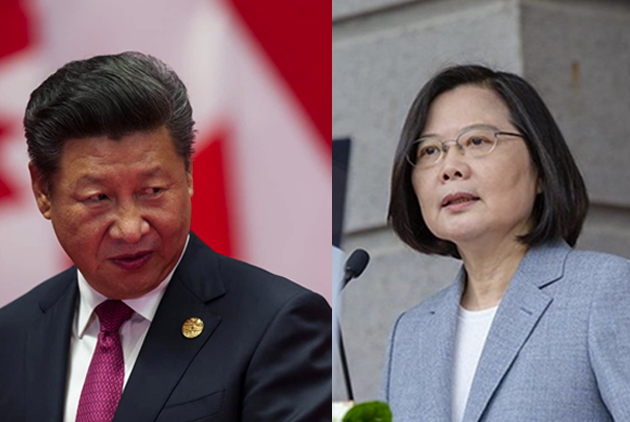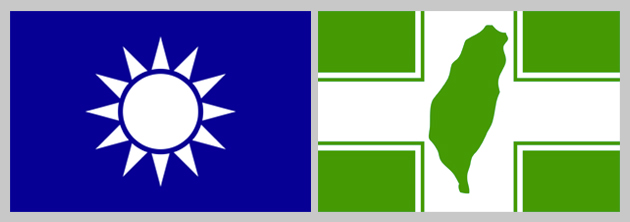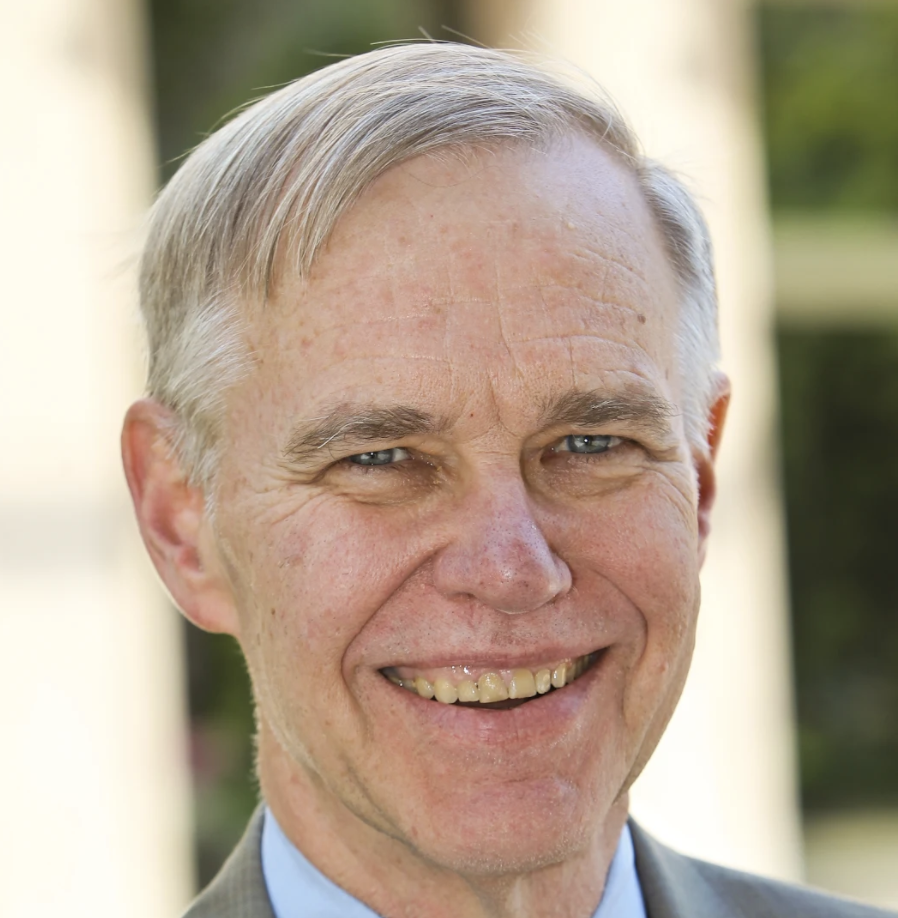New directions in cross-strait relations: Richard Bush

Source:Shutterstock /Office of the President R.O.C.
How long can Taiwan afford not to make difficult choices for its future? It is one of the tough questions asked by long-time Taiwan observer and former AIT Chairman Richard C. Bush in his new book. He argues that Taiwan urgently needs to build a consensus and a strategy if it wishes to survive and preserve the good life that it enjoys.
Views
New directions in cross-strait relations: Richard Bush
By Richard C. Bushweb only
Richard C. Bush, a Brookings Institution non-resident senior fellow, is one of the most experienced and revered in the field of China and Taiwan studies. The former chairman and managing director of the American Institute in Taiwan has several books on the topic under his belt.
In his most recent book Difficult Choices: Taiwan’s Quest for Security and the Good Life, published by the Brookings Institution Press, he explores a broad range of issues and policy choices Taiwan confronts and offers suggestions both for what Taiwan can do to help itself and what the United States should do to improve Taiwan’s chances of success.
The following extract has been taken from the book’s opening chapter. Its Traditional Chinese version was published in Taiwan June 2021.
Beginning in the mid-1980s, the cross-Strait relationship changed in three significant ways that were relevant to the political dimension of this political-military dispute. The first was economic. Gradually, an array of Taiwanese companies, which had been losing global competitiveness by continuing to manufacture products on Taiwan itself, revived their businesses by relocating some of their operations to China. This shift was an immediate boon to the PRC because it put its people to work and led to the transfer of technology and management skills. But the government in Beijing, led as it was by Marxists, hoped that growing economic integration would lead ultimately to political unification. The process would take time, but it was enough at this time to put the one country, two systems formula on the table for future negotiations.
 Taiwan’s president, Chiang Ching-kuo. (Source: CommonWealth Magazine)
Taiwan’s president, Chiang Ching-kuo. (Source: CommonWealth Magazine)
The second development was a decision in 1985 and 1986 by Taiwan’s president, Chiang Ching-kuo, son of Chiang Kai-shek, to open up the political system. The elder Chiang had imposed a hard-authoritarian regime on the island. His son softened the system and then decided that it was in the interests of the KMT and Taiwan to move gradually to democracy. From the late 1940s to the late 1980s, the public at large had no voice concerning who held power and what policies were best. From the early 1990s on, in contrast, they have been free to debate the dangers and opportunities posed by China, the pros and cons of dependence on the United States, and what kind of society Taiwan should be. In addition, they effectively gained a seat at the negotiating table if talks with Beijing ever began.
Democratization also introduced a new, third element into the long-running political disagreement between Beijing and Taipei. In addition to the issues of whether the ROC or the PRC would represent China in the world and how the dispute between them should be resolved, a new issue arose concerning the territory of Taiwan: whether it was a part of China at all. The constant view in Beijing, and the traditional view in Taipei, was that the island had legally been returned to China. (A small Taiwan independence movement had begun after the KMT takeover and was made up of overseas exiles who believed Taiwan should be its own country.)
Yet once people in Taiwan gained the right of free expression and free assembly, previously taboo ideas about the island’s future became everyday topics of political discussion and advocacy. Only a small share of the population regarded themselves as exclusively Chinese, while an overwhelming majority saw themselves as Taiwanese or some undefined mixture of both. At the same time, some Taiwan people rejected the idea that Taiwan was part of a divided country (China). Instead, they said, it should become an independent country—a Republic of Taiwan—that had no legal connection with China. This was an outcome that Beijing and KMT traditionalists strongly opposed, and the PRC has warned repeatedly that independence would lead to war. These issues have created a mare’s nest of complexity that the average Taiwan citizen or a member of the U.S. Congress does not understand. Yet these questions of political and legal identity are the fulcrum governing Taiwan’s future and whether that future will be peaceful.
Before long, the KMT, which had remade itself to engage in democratic competition, and the Democratic Progressive Party (DPP), which was founded by opponents to authoritarian rule, established themselves as the main contenders for power and policy. By 2000, each major party led a coalition that included smaller splinter parties. These two camps became known as the Blues and the Greens, the respective colors of the KMT and DPP flags. The Blues believed that Taiwan could reap the benefits of economic interactions with China without risking its political autonomy. The Greens perceived a greater risk that economic dependence would lead to political subordination to the PRC.
 The party flag of the KMT (left) and the DPP (right).
The party flag of the KMT (left) and the DPP (right).
Both camps generally agree that they must rely on the United States to preserve Taiwan’s autonomy, but the Blue camp has more confidence in its ability to manage the China risk. In addition, both camps have a spectrum of views that run from “deep” to “light.” The Deep Blues tend to adhere to the ROC’s early staunch anticommunist and anti-independence stance and favor unification of some sort, while the Light Blues are more comfortable with Taiwan’s maintaining political distance from China, even as it secures benefits from economic relations. The Deep Greens favor a more radical approach to securing autonomy through measures that call for Taiwanese independence, while the Light Green are more concerned about the potential for conflict and are more comfortable maintaining some sort of status quo between the ROC and the PRC.
Political power in Taiwan has shifted back and forth between Blue and Green camps, as well as between light and deep within each camp. President Lee Teng-hui, who dominated the Taiwan political system during the 1990s, started out with a Blue stance and moved increasingly toward a Green one during his time in office. The DPP’s Chen Shui-bian, who was president from 2000 to 2008, began as a Light Green leader and shifted to Deep Green after a couple of years.
 The DPP’s Chen Shui-bian, who was president from 2000 to 2008. (Source: Chien-Ying Chiu)
The DPP’s Chen Shui-bian, who was president from 2000 to 2008. (Source: Chien-Ying Chiu)
In 2008 Ma Ying-jeou and the KMT swept the DPP from power. Ma believed that to preserve its prosperity, freedom, and security, Taiwan needed to maintain some degree of engagement with Beijing. That policy worked politically until around 2014, after which more and more people worried that Taiwan was becoming too dependent on China and that any benefits of that dependence were not broadly shared.
 The KMT’s Ma Ying-jeou , who was president from 2008 to 2016. (Source: CommonWealth Magazine)
The KMT’s Ma Ying-jeou , who was president from 2008 to 2016. (Source: CommonWealth Magazine)
In 2016 Tsai Ing-wen and the DPP brought about the latest turn of this wheel. On January 16 of that year, Tsai won an easy victory in the presidential election and her party, the DPP, won an absolute majority in the island’s Legislative Yuan (LY), a stunning reversal from only eight years earlier. Four years later, Tsai won reelection with a higher margin than in 2016, and the DPP maintained its legislative majority, but with fewer seats. Political competition is firmly institutionalized, and the voters have the final say.

The dilemmas posed by Taiwan’s democracy
Taiwan’s democratization created dilemmas for both the PRC and the United States. For Beijing, achieving unification would be more difficult now that the public had a say in decisions concerning their fundamental future. Moreover, there was the danger that elements on the island who wanted de jure independence would exploit the more open system to achieve their goals, which in turn might lead the PRC to go to war to stop it. For Washington, cross-Strait conflict would require it to decide whether to come to Taiwan’s defense. For Taipei, preserving security and the good life would be more difficult in a political system where contending forces all had a say.
For Beijing
Taiwan’s democracy and open discussion of de jure independence have worked very much to the PRC’s disadvantage. Once the island’s people gained their political voice, it was no longer possible for Beijing to negotiate a deal with a small group of leaders in Taipei, as it no doubt had hoped. Most people identify to some degree with Taiwan and less with China, and a minority of people want a Republic of Taiwan. Support for unification is low. The people Taiwan voters have picked to be their presidents have not always been to Beijing’s liking. Indeed, of the candidates elected since the first direct vote in 1996— Lee Teng-hui, Chen Shui-bian, Ma Ying-jeou, and Tsai Ing-wen—Ma was the one with whom Beijing was most comfortable, and his effort to stabilize cross-Strait relations and put the PRC and Taiwan on a mutually beneficial basis ultimately met strong opposition. That again called into question the PRC approach of working through Taiwan leaders to create circumstances conducive to unification. Then there is the reality that Taiwan is a constitutional democracy. That means, in my view, that if Beijing’s approach to unification requires significant changes in Taiwan’s political institutions and legal identity, as it would under one country, two systems, that would require amendments to the ROC Constitution. The hurdles involved in enacting those amendments are so high that passage is impossible unless the DPP and the KMT agree that the changes proffered are worth accepting.
 The Cross-strait Summit in 2005. (Source: Ming-Tang Huang)
The Cross-strait Summit in 2005. (Source: Ming-Tang Huang)
Beijing has made its task more difficult by misperceiving the goals of the Taiwan leaders. It has branded Lee Teng-hui, Chen Shui-bian, and Tsai Ing-wen as proponents of Taiwan independence, who would use their power as president to bring about that goal. I argue that what Lee Teng-hui advocated was not de jure independence but PRC acceptance that Taiwan and its government were a sovereign entity both for purposes of Taiwan’s international role and of any negotiations concerning unification. He did not oppose unification, just the terms that Beijing offered, which were contrary to the idea of a sovereign Taiwan. Chen Shui-bian was more complicated in his goals, strategy, and tactics, but he was constrained not only by Beijing but also by the KMT, the Taiwan public, and the United States. Given Tsai’s moderate, cautious approach to the PRC, Beijing has been hard-pressed to make the case that her goal is what Beijing said it was. Ironically, Ma Ying-jeou was willing to accept the PRC precondition for productive relations, but he did so in a way that would have been a two-China policy, which Beijing opposes as much as Taiwan independence. Also, he deflected PRC pressure to begin political talks.
In short, the PRC faces a more serious problem than the unwelcome policies of this or that Taiwan president. Over a four-decade period, it has not been able to convince Taiwan’s leaders and the island’s people to accept unification or even to begin political talks that might lead to unification.
Its formula for unification—one country, two systems—has never had a market on Taiwan, particularly after the democratic transition.
The public may not support de jure independence, but their identification with Taiwan, where, by now, most of them were born and raised, is strong. Cross-Strait economic interdependence sustained Taiwan’s prosperity, but it did not change political attitudes appreciably and instead created fears of overdependence. Beijing had hoped that successful application of the formula in Hong Kong would encourage Taiwan citizens and leaders to accept it.
 Hong Kong's anti-extradition law amendment bill movement. (Source: Shutterstock)
Hong Kong's anti-extradition law amendment bill movement. (Source: Shutterstock)
But growing political conflict in Hong Kong in the 2010s, capped by violent protests in the summer and fall of 2019, and Beijing’s May 2020 decision to impose a national security law only strengthened Taiwan citizens’ opposition to unification. This has left PRC leaders with a difficult choice. Do they accommodate to the Taiwan public’s opposition to unification based on one country, two systems and try to make the best of the status quo? Do they formulate an approach to unification that is more compatible with the views of the DPP, the KMT, and the public at large? Do they roll the dice and go to war to achieve their objective, and then have to rule an unhappy populace?
For Washington
The United States had strongly supported Taiwan’s democratization as evidence of the triumph of American values at the end of the Cold War. Washington was not so pleased when the policies of Taiwan’s elected leaders ran contrary to its long-stated abiding interest in peace and security in the Taiwan area. In particular, U.S. officials worried that Presidents Lee Teng-hui and Chen Shui-bian were taking Taiwan in a direction that would provoke Beijing, destabilize cross-Strait relations, and increase the possibility of a conflict that was unnecessary in Washington’s view. For this reason, Washington distanced itself from Lee’s and Chen’s destabilizing initiatives in an effort to restrain them.
On the other hand, the United States had a more positive assessment of Ma Ying-jeou, and it shifted its approach to Taiwan accordingly. Similarly, Tsai Ing-wen has maintained good relations with the United States. Once she became a candidate for the 2016 election, she worked hard to reassure the Obama administration that her cautious approach to mainland China was compatible with the U.S. interest in cross-Strait stability. After Tsai was elected, Washington disagreed with Beijing’s argument that she was changing the status quo. In a speech at the Brookings Institution in October 2017, James Moriarty, chairman of the American Institute in Taiwan, offered this judgment: “My interactions with President Tsai have reaffirmed my conviction that she is a responsible, pragmatic leader. The United States appreciates her determination to maintain stable cross-Strait ties in the face of increasing pressure from the PRC on a number of fronts.”
 James Moriarty, chairman of the American Institute in Taiwan. (Source: Chien-Tong Wang)
James Moriarty, chairman of the American Institute in Taiwan. (Source: Chien-Tong Wang)
Tsai understood that it was in her administration’s interest to maintain a close alignment with the United States. Moreover, Tsai had worked in both the Lee Teng-hui and Chen Shui-bian administrations and saw what happens when Taiwan’s leaders followed policies that Washington viewed as challenging its interests and ignored the risks of getting on Washington’s bad side. Consequently, through her first four-year term, Tsai did nothing to create credible suggestions that she would do the same.
For Taiwan
Under the island’s democratic system and with the support of the United States, Taiwan’s leaders and its public have rejected any consideration of Beijing’s plan for unification, even as they enjoy, with some anxiety, the benefits of the economic relationship. But this success has only blocked what Taiwan wishes to avoid. It has not defined clearly how it is that Taiwan should seek to survive in a dangerous world and preserve the good life, and how to accomplish that. Vigorous debates on the very meaning of political and legal identity continue. Are there two Chinas, the PRC and the ROC, or just one? Is Taiwan a part of the sovereign territory of that China, whichever Chinese government represents China internationally? Is Taiwan its own state, legally distinct from China?
Taiwan could better achieve those objectives if leaders, institutions, and the public forged a domestic consensus on grand strategy that is based on a realistic assessment of the island’s strategic environment. They must then iterate the ends and create the means to implement this grand strategy to its full potential. Yet democratic systems often have a particularly difficult time effecting internal consensus, since contending political forces can disagree about the dangers they face and how to adjust to them.
(Source: CommonWealth Magazine)
Taiwan has a vibrant democracy, albeit sometimes an unruly one. Civil and political rights are protected. At all levels of the political system, the chief executive and legislators are picked by well-run competitive elections. There is an independent judiciary, which frees the courts from improper influence. Civil society plays an increasingly important role in politics. However, democratic systems also institutionalize conflict. Politics in Taiwan is polarized between the Blue and Green camps, making differences of opinion common and compromise difficult to reach. Furthermore, it is easier for opponents of a policy initiative to block it than for its proponents to build sufficient support to enact it. The media in Taiwan prefer sensation and scandal to policy substance. None of Taiwan’s political institutions work perfectly, and there is a serious debate about the value of representative versus direct democracy. The public has periodically disapproved of the performance of both the DPP and the KMT, leading to regular transfers of power. Perhaps most serious is that political leaders have a severe aversion to being straight with the public on the need to choose between competing priorities regarding both domestic policy and how to cope with China and to work in a more bipartisan way to make authoritative choices.
The two levels of Taiwan’s policy dilemma—navigating postindustrial democratic development, on the one hand, and managing the challenge from an increasingly powerful and revisionist PRC, on the other—reinforce each other and make meeting them all the more complicated. Even if China, with its dreams of unification, were 9,000 miles away from Taiwan, instead of just 90 miles—and even if the PLA were not enhancing its military capabilities to prepare to fight a war over Taiwan, as it is—Taiwan would still face major policy questions, for which answers are not always obvious. But China is ninety miles away, and its military capabilities are growing, complicating Taiwan’s ability to defend itself against Chinese attack and the ability of the United States to come to its aid. Generally speaking, Taiwan’s democratic system may appear to perform well in comparison with others, including the United States. However, the stakes involved and the high costs of failure require a proportionately higher level of performance on the part of the island’s elected leaders. Taiwan has little margin for neglect and even less margin for error.

About the author:

Richard Bush is a nonresident senior fellow in the Center for East Asia Policy Studies (CEAP) at Brookings. Bush came to Brookings in July 2002, after serving almost five years as the chairman and managing director of the American Institute in Taiwan. He is author of books including "At Cross Purposes: U.S.-Taiwan Relations Since 1942", "Untying the Knot: Making Peace in the Taiwan Strait", "A War Like No Other: The Truth About China’s Challenge to America", "Perils of Proximity: China-Japan Security Relations", and "Uncharted Strait: The Future of China-Taiwan Relations".
Uploaded by Penny Chiang






